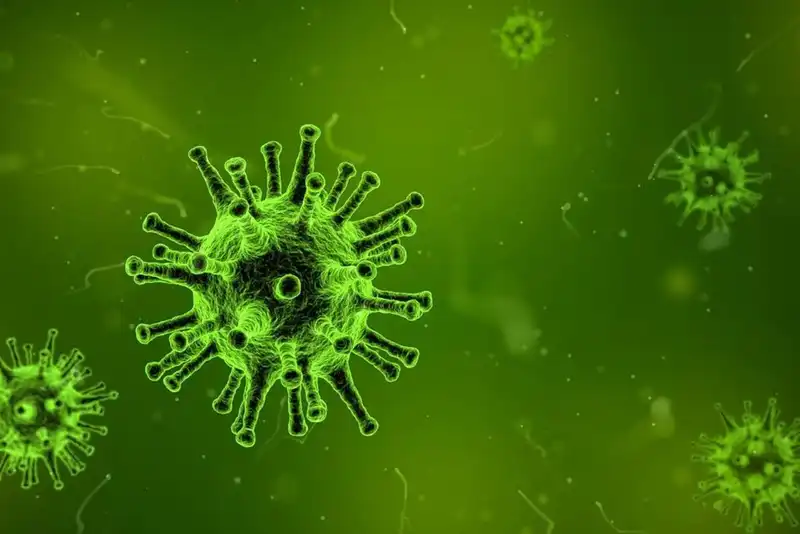The Different Types of Foodborne Illness to Look Out For

Food safety has always been important in the food business. The pandemic merely accelerated the need to create a modern approach to food safety to curb all types of foodborne illness.
Even though there are regulations and protocols in place to ensure food safety in the US food supply, food contaminations still happen. According to the CDC, about 48 million people or 1 in 6 Americans get sick from foodborne illness every year. These incidents include about 128,000 hospitalizations and 3,000 deaths, with bacteria and viruses as the leading causes of food poisoning.
Food poisoning not only hurts your customers, it is also detrimental to your business. If your restaurant fails in implementing proper food handling practices, your business could suffer from temporary or permanent closure. This primer on foodborne illness will help you identify potential risks in your business and avoid instances of contamination.
What is a Foodborne Illness?

Foodborne illness, also called a foodborne disease or food poisoning is caused by ingesting contaminated food or drink. According to the CDC, there are over 250 foodborne diseases. Most of these diseases are infections caused by different viruses, parasites, and bacteria. Chemicals and harmful toxins can likewise contaminate food resulting in foodborne illness.
People can contract foodborne pathogens from drinking contaminated water, infected animals, or their environment, as well as through person-to-person spread. While most people with a foodborne illness can recover without any medical treatment, it is recommended that you see a doctor if you experience severe symptoms.
Symptoms of Foodborne Illness
After being exposed to a foodborne pathogen, the symptoms will usually manifest between several hours to a week. Symptoms will vary depending on the type of foodborne disease, but the most common symptoms of foodborne illness are vomiting and/or diarrhea lasting approximately 1-7 days. Additional symptoms include fatigue, nausea, stomach cramps, fever, joint aches, and backaches.
Anyone is at risk of contracting a foodborne disease, but certain groups are more vulnerable. The people who are more likely to contract foodborne illnesses are the elderly or older adults, children, pregnant women, and people with weakened immune systems (e.g. people with diabetes, kidney disease, HIV/AIDS).
Common Foods Associated with Foodborne Illness
Contamination can happen to all kinds of food, but certain types are more prone to contamination. Here are some of the foods The Department of Health identified as commonly associated with foodborne illness.
- Raw foods from animals (e.g. raw eggs, raw meat and poultry, raw shellfish, unpasteurized milk)
- Fruits and vegetables may be contaminated by water with pathogens used for washing the produce or by animal waste which is used as fertilizer
- Raw sprouts due to microbes which can grow during the sprouting process
- Unpasteurized fruit juices or cider
- Any food item handled by a sick person experiencing diarrhea/vomiting or someone who has recently been ill
The Different Types of Foodborne Illnesses

The most common types of foodborne pathogens causing outbreaks in America are bacteria and viruses, according to the FDA.
They have specifically identified the "Big 6 Pathogens" (pdf) which are highly infectious and can cause severe symptoms even in small quantities. These pathogens are E. Coli, Norovirus, Salmonella, Campylobacter, Hepatitis A, and Listeria.
E. Coli
Escherichia coli, a major bacteria species, is one of the biggest contributors to foodborne illness around the world. E. Coli can live in human intestines by entering the body through contaminated water or food. Though some E. coli species do not cause disease, some can cause severe symptoms like abdominal pain, vomiting, and even bloody diarrhea.
Preventive tips- Practice safe food handling, cook meats thoroughly, and avoid using unpasteurized milk and unpasteurized juices.
Norovirus
Norovirus is another common cause of foodborne illness in the US. This can come from contaminated food or water as well as through person-to-person spread. The incubation period is usually within 12 hours to 2 days. Symptoms include projectile vomiting along with stomach cramps and diarrhea. People can also experience mild fever, headache, and muscle pain.
Preventive tips- Practice safe food handling and thorough handwashing.
Salmonella
Salmonella causes two kinds of foodborne illness- Salmonellosis and Enteric fever.
Salmonellosis is caused by ingesting a wide variety of contaminated foods, from meat and eggs to fruits and nuts. This is characterized by nausea, vomiting, diarrhea, cramps, and fever. The symptoms can last for a couple of days to a week.
Enteric fever is a serious foodborne illness which includes typhoid fever and paratyphoid fever. A big chunk of enteric fever infections come from people who were infected outside of the US and is usually associated with sewage-contaminated drinking water.
Symptoms include muscle aches, headache, high fever, diarrhea or constipation, and drowsiness. About 10% of people who don't get treatment for enteric fever may die.
Preventive tips- Cook foods thoroughly, practice good handwashing, separate raw foods from cooked foods, and store foods at correct temperatures. Get vaccinated before traveling to countries with typhoid fever.
Campylobacter
Cases of foodborne illness caused by Campylobacter bacteria are sporadic and usually not part of outbreaks. This common cause of foodborne illness in the US can enter the body through contaminated water, unpasteurized milk, unpasteurized cheese, and raw or undercooked poultry, meats, and seafood.
Infected individuals may experience fever and gastrointestinal symptoms like nausea, cramps, vomiting, and diarrhea. These symptoms may occur within 2 to 5 days and could last up to 10 days. Campylobacter infections that spread to the bloodstream can be life-threatening.
Preventive tips- Practice safe food handling and good handwashing, cook meat (especially poultry) thoroughly and avoid raw or unpasteurized milk and cheese.
Hepatitis A
Hepatitis A is a common foodborne illness caused by the Hepatitis A virus. Infection occurs when you eat or drink contaminated food or beverage, usually water, shellfish, and salads. Illness from Hepatitis A is usually mild with an incubation period of 2 to 4 weeks.
This illness is characterized by low appetite, nausea, muscle aches, fever, vomiting, diarrhea, and yellowing in the whites of the eyes and the skin.
Preventive tips- Practice good handwashing.
Listeria
Foodborne Listeriosis, while uncommon, is considered one of the leading causes of death from foodborne illness. It can cause two types of disease. The milder form usually resolves itself with symptoms including nausea, vomiting, aches, fever, and diarrhea in some cases.
The deadly form happens when the infection spreads beyond the gut to the blood or brain. This can lead to a blood infection, meningitis, and other life-threatening problems. Pregnant women infected by Listeria can experience preterm labor, stillbirth, miscarriage, and severe illness or death in the newborn.
Preventive tips- To avoid getting sick or getting infected from eating contaminated food, the CDC suggests four simple food safety steps- clean, separate, cook, and chill.
You can also protect yourself and others by practicing good handwashing, storing food in a clean refrigerator clean and at 40 F, separating raw from cooked foods, and avoiding unpasteurized raw milk and cheese.
Key Takeaways
- Foodborne illness is caused by ingesting food or drink contaminated by viruses, parasites, bacteria, chemicals, or harmful toxins. People can contract foodborne pathogens from infected animals or their environment and through person-to-person spread.
- Observing proper hygiene, safe food handling, storing food in proper temperature, cooking food thoroughly, separating raw from cooked food, avoiding unpasteurized food items, and practicing good handwashing can reduce incidents of foodborne illness.
- E. Coli, Norovirus, Salmonella, Campylobacter, Hepatitis A, and Listeria are the "Big 6 Pathogens" identified by the FDA as highly infectious and can cause severe symptoms even in small quantities.
- Common foods associated with foodborne illness are raw foods from animal origin, fruits and vegetables, raw sprouts, unpasteurized fruit juices or cider, and any food item handled by a sick person experiencing diarrhea/vomiting or someone who has recently been ill.
- 1 in 6 Americans get sick from foodborne illness every year resulting in about 128,000 hospitalizations and 3,000 deaths.